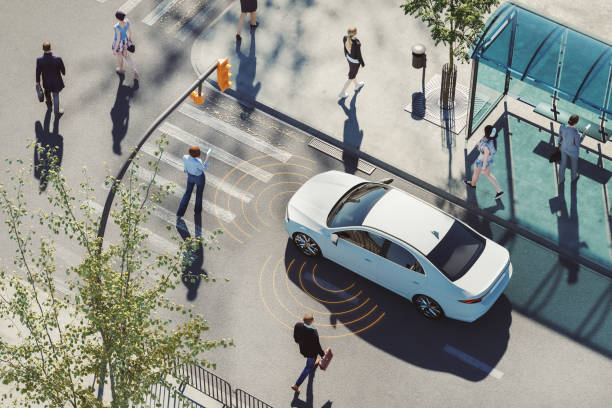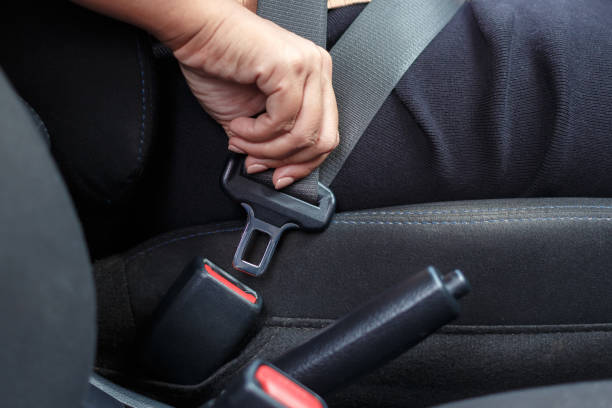The Role of Autonomous Vehicles in Reducing Road Accidents

The automobile industry is constantly seeing groundbreaking changes in the form of autonomous vehicles, such as driverless cars. Safety, efficiency and convenience are all potential benefits of these new modes transportation. One of the most important applications for autonomous vehicles is their ability to significantly reduce traffic incidents. This article details how autonomous vehicles can accomplish this, what the current state of technology is and where challenges still lay in store.
Understanding Autonomous Vehicles
The self-driving cars are having latest sensors, cameras and AI systems that help them to move freely according to the traffic. The vehicle’s sensory systems are combined with radar, lidar, GPS and computer vision capabilities to interpret the environment around it in a way that allows them to make decisions and control their vehicles. The pesky 5 levels The Society of Automotive Engineers (SAE) have defined six levels for automation, ranging from Level 0 to Level… Today, many autonomous vehicles on the market are at Level 2 or Level3 of automation(The driver has to supervise driving and be ready to take charge when needed).
The Role of Human Error in Road Accidents
Most road accidents are caused by human error. Ninety-four percent of serious crashes are due to human error, according to the National Highway Traffic Safety Administration (NHTSA). Other Common Errors: – Distracted driving (inattention to the roadway, cell phone use) Speeding/inappropriate speed for conditions OUI Failure to obey traffic laws The errors of human drivers can be completely done away with using precise algorithms and real-time checking by nature they are the driving medium. Autonomous systems do not become distracted, tired or impaired in any way and react to road hazards quicker, more accurately.
How Autonomous Vehicles Can Reduce Road Accidents
Elimination of Human Error
By far, the primary manner in which autonomous vehicles can mitigate road accidents is by eradicating human fault. That could mean a future where self-driving cars will obey traffic laws to the letter, keep our vehicles extra far apart and drive slower in slippery road conditions. And they can monitor their surroundings in real time and respond to risks as soon as possible. So where a driver may also noticed the pedestrian stepping into the road, and braked immediately themselves – an autonomous vehicle could brake sooner than is possible for humans.
Enhanced Perception and Reaction
Self-driving cars have the latest sensors and cameras that can give them a complete panoramic view of their surroundings. These sensors even operate with some anonymity, able to sense objects and people accurately while poorly or not at all visible. This is information that the AI systems pass through in milliseconds, making reaction times minuscule. This improved sensing and reaction would reduce accidents caused by delayed human response or unnoticed hazards.
Consistent and predictable behavior
This lane can be filled with erratic human drivers who make sudden changes of lanes, cut in front or brake abruptly. This is in stark contrast to autonomous vehicles, which follow predetermined logarithms that produce reliable and predictable results. With this predict most, less chances of accidents due to erratic driving and easier for others on the road to anticipate their movements.
Communication between cars
Vehicle to vehicle (V2V) communication systems make it possible for autonomous cars to communicate with each other. This communication enables vehicles to share information that in turn permits them not only to operate cohesively together, performing coordinated maneuvers as they go about their business but also – most critically for our purposes – avoid collisions with each other. As an example, if a driving vehicle can detect the condition of traffic and road obstacles on one point it could instantaneously arrange tie-up with further vehicles in range where that maneuver is required etc. Such symbianotic relationships keep the entire road system, as a whole, safer and less susceptible to injuries in multi-vehicle scenarios.
Compliance with Traffic Laws
Autonomous motor vehicles are needed to comply with targeted traffic police. Because they never speed, run red lights or drive recklessly. When following the rules of traffic, they are capable of dramatically reducing instances where driving violations trigger a road accident. At the same time, driverless cars can orchestrate traffic more efficiently by preventing gridlock and that sort of godawful stop-and-go stuff; in other words they will make our roads even safer.
Current State of Autonomous Vehicle Tech
Recent years have seen rapid progress in the development of autonomous vehicle technology. Since then, innovators such as Tesla, Waymoand Uber have lead the way in testing and implementing self driving cars throughout various areas. For example, Tesla’s Autopilot and Full Self-Driving (FSD) can drive on highways without the need for a driver to keep their hands on the steering wheel or eyes on the road. For example, a fully autonomous ride-haling service based in Phoenix, Arizona operated by Alphabet Inc. subsidiary Waymo provides Level 4 automation which demonstrates commercial viability of the concept as well.
While this is all great, self-driving cars (Level 5) are still not available for commercial use. Still in the testing phase, there remain sizable challenges to address – chiefly handling complicated driving scenarios and getting safety right across a wide range of environments. Moreover, there are considerable non-technical barriers in terms of regulation on one hand and public acceptance as well as ethical aspects that need to be addressed before such technology will be able to saturate the market.
Challenges and Limitations
Technical Challenges
Creating trustworthy, safe autonomous vehicles is a tough technical problem. This will include greater sensor accuracy, decision-making based off of AI can improve a lot further and reliability in harsh weather conditions among different road types. For example, lidar and radar systems are influenced by rain,rain fog or snow weather where it may affect the sensor readings leading to disruption of vehicle safety.
Regulatory & Legal Issues
The regulatory environment around autonomous vehicles is evolving. Regulatory Agencies and Governments Must Set Clear Regulatory And Compliance Guidelines For The Testing, Implementation, AND Operation of Autonomous Cars. The same goes for the competing issues surrounding liability in an accident, as well data privacy and even cybersecurity. Regulatory systems must be in place to ensure that when autonomous vehicles become more mainstream, they are used safely and ethically.
Public Engagement and Trust
Autonomous vehicles need to win the hearts and minds of consumers There are a great deal of people who do not trust self-driving products on the road. Safety concerns have also been an issue due to well-publicized accidents involving autonomous vehicles. The automotive industry must partner with policy makers to educate and make a case for AVs, as well as work harder at being transparent about the development of AV technology.
Ethics and Moral Implications
Ethics-programmed on Autonomous Vehicles based in complex scenarios For instance, if the vehicle is heading for an unavoidable collision should it swerve in a way that lets more passengers live and puts at risk pedestrians-and other road users-or make decisions otherwise. This introduces new ethical dilemmas for developers, and a debate from society.
As a Final Consideration
While the cars can do their bit, autonomy will revolutionize road safety by eradicating human mistakes and bringing with it much more perceptivity to reaction times in addition to preventing substandard actions of consistency. Despite the progress that has been realized so far, many challenges still exist in connection with legal and regulatory technical barriers as well ethical issues around public acceptance. Meeting these challenges will require cooperation among technology developers, regulators and policymakers, as well as with the public. The rapid advancement of autonomous vehicle technology has the potential to drastically lower traffic fatalities and improve road safety while establishing a more efficient means for transportation.












Post Comment